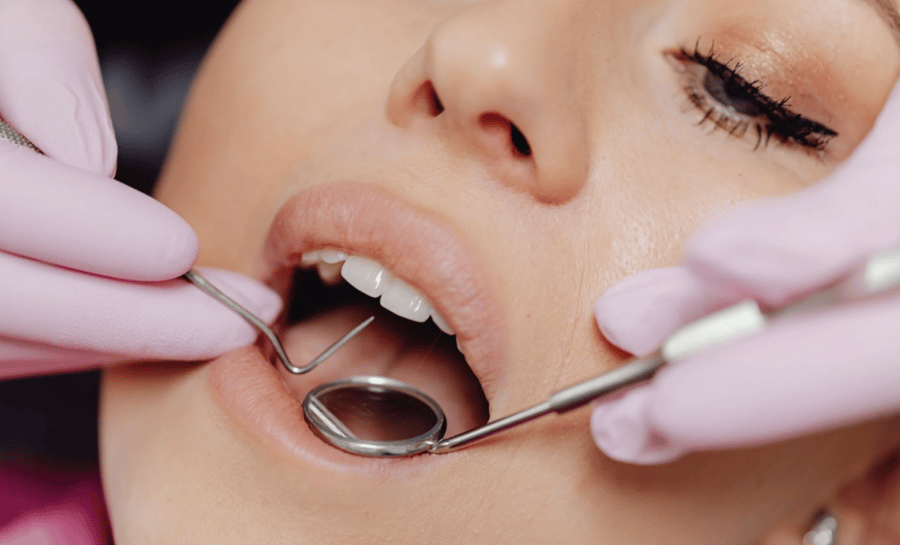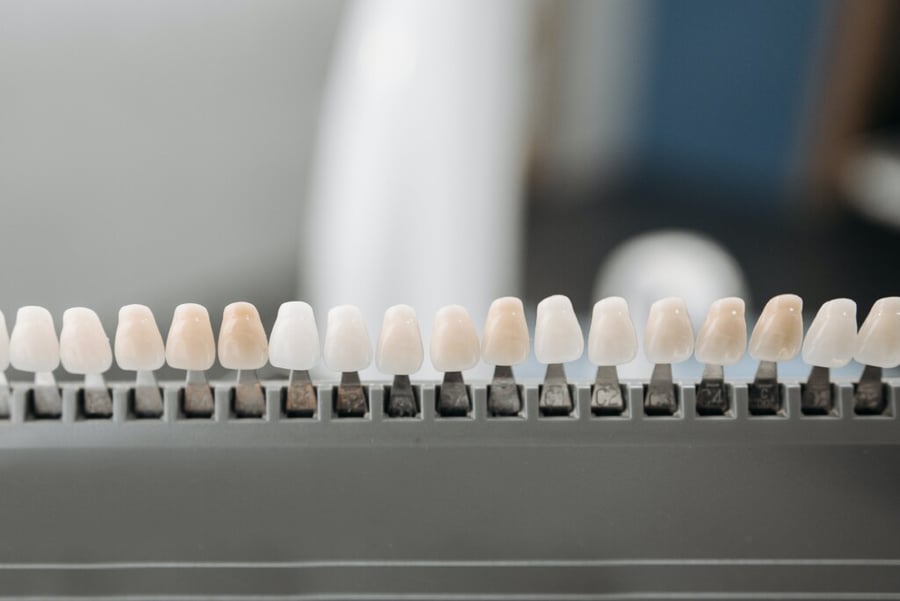What You Need to Know About Dental Insurance
January 5th, 2024 | 5 min read

Understanding dental insurance is as perplexing as deciphering a complex dental procedure. Yet, it’s a crucial aspect of managing your oral health care effectively and economically.
At NYC Smile Design, our team knows navigating dental insurance intricacies has been key to maintaining my oral health while managing costs effectively and our team has helped patients find a solution that fits with their insurance plan.
This article focuses on the details and fine print of dental insurance, aiding you in making informed decisions about your coverage and ensuring your dental needs are met without financial strain.
Decoding Dental Insurance Coverage
Decoding dental insurance coverage is essential because it empowers you to make informed decisions regarding your oral health care. Understanding the specifics of what your plan covers, from preventive care to major procedures, helps in budgeting for potential costs and avoiding unexpected expenses. Additionally, being aware of the limitations and exclusions of your policy, such as annual maximums and waiting periods, ensures that you can maximize your benefits and minimize financial strain. Essentially, a clear grasp of your dental insurance details is the key to optimizing your oral health investments and avoiding surprises during your dental care journey.
UCR
UCR, or Usual, Customary, and Reasonable rate, is a term used in dental insurance to describe the amount that insurance companies decide is a fair payment for a specific dental procedure. This rate varies by state and even by zipcode, making it a unique figure for different regions. When your insurance plan mentions covering 100% or 80% of dental costs, it’s referring to percentages of the UCR, not the actual fee charged by the dentist. Another important aspect to note is the annual maximum, which is the cap on how much the insurance will pay in a year. Interestingly, this annual maximum hasn’t seen significant changes in about 25 years for many insurance plans, which can affect your out-of-pocket expenses for dental care.
Preventive Care
Preventive care is a vital component of dental insurance, often covered at 100% to encourage regular maintenance of oral health. These plans typically include essential services like cleanings, exams, and X-rays, which play a crucial role in early detection and prevention of dental issues. By fully utilizing these benefits, you can maintain regular dental checkups and necessary preventive measures without incurring additional costs, ultimately leading to better oral health and potentially reducing the need for more expensive and invasive treatments in the future.

Basic Procedures
Basic dental procedures, such as fillings, root canals, and extractions, are commonly included in dental insurance plans with coverage typically ranging from 70-80%. This means that while a significant portion of these essential treatments is covered, you will be responsible for the remaining percentage of the cost. It’s important to factor in these potential out-of-pocket expenses when considering dental work, as these procedures, while basic, are crucial for addressing common dental issues and preventing further oral health complications.
Major Procedures
When it comes to more complex dental treatments like crowns, bridges, dentures, and occasionally orthodontics, dental insurance typically offers a lower coverage level, often around 50% or even less. This reduced coverage reflects the higher costs associated with these major procedures. Understanding this aspect of your dental insurance is crucial, as it directly impacts the financial planning required for these significant, yet often necessary, treatments that play a pivotal role in restoring and maintaining both dental function and aesthetics.
Orthodontic coverage in dental insurance is typically structured as a fixed lifetime benefit, separate from the standard annual dental benefit. This means that in addition to your regular yearly dental coverage, which might be around $1,500, you also have a one-time orthodontic benefit. This orthodontic benefit is usually in the range of $1,500 to $2,000 and is available over the course of your lifetime, rather than annually. This distinction in coverage allows for a specific allocation towards orthodontic treatments, such as braces, separate from other dental procedures.
Cosmetic Dentistry
Most dental insurance plans do not typically cover cosmetic procedures such as teeth whitening or veneers, unless these treatments are deemed medically necessary. This exclusion is crucial to understand for anyone considering cosmetic dental enhancements, as it means these procedures will likely entail personal expenses. Your dentist can submit a component of your cosmetic procedure to your insurance company to maximize your benefit. Knowing this can help in planning and budgeting for cosmetic treatments, ensuring you’re prepared for the financial aspect of achieving the aesthetic dental results you desire.

Limitations and Exclusions
Grasping the limitations and exclusions within your dental insurance policy is crucial for effective dental health planning. Key aspects like annual maximums, waiting periods, clauses regarding pre-existing conditions, and missing teeth can greatly influence the extent of your coverage and the out-of-pocket expenses you incur. Being aware of these details helps in avoiding unexpected costs and ensures that you fully understand the scope and boundaries of your insurance benefits when planning for dental treatments.
Choosing the Right Dental Insurance Plan: Factors to Consider
Network of Dentists
When selecting a dentist, it’s crucial to understand your dental insurance plan’s network parameters. Many plans specify a network of approved dentists and will limit coverage if you choose a provider outside this network. On the other hand, some plans offer the flexibility to select any dentist, in-network or out. Checking whether your preferred dental professional is part of your insurance network is a key step in managing your dental care costs and ensuring you receive the full benefits of your coverage. This consideration is vital for maintaining both financial prudence and satisfaction with your dental care choices.
Cost vs. Benefits
Assessing the financial aspects of your dental insurance, such as premiums, deductibles, copayments, and out-of-pocket maximums, is essential to gauge the true value of your plan. This analysis involves weighing these costs against the extent of coverage offered. A plan with lower premiums might come with higher out-of-pocket expenses for certain procedures, and vice versa. Understanding this balance can help you choose a plan that not only fits your budget but also provides adequate coverage for your dental care needs, ensuring a cost-effective approach to managing your oral health.

Specific Dental Needs
Selecting the right dental insurance plan should be closely aligned with your oral health status and anticipated future needs. If your dental history or current condition suggests the likelihood of requiring major dental work in the future, it’s prudent to consider a plan that offers more comprehensive coverage for such procedures. This foresighted approach ensures that your insurance plan aligns with your specific oral health requirements, providing both peace of mind and financial practicality in managing your dental care journey.
Tips for Maximizing Your Dental Insurance
- Understand Your Policy: Familiarize yourself with your plan’s details, including covered procedures, percentages, and limitations.
- Plan Your Treatments: Work with your dentist to schedule treatments in a way that maximizes your benefits, especially if you’re approaching your annual maximum.
- Preventive Care: Take full advantage of covered preventive care to avoid more costly treatments down the line.
- Communication with Your Dentist’s Office: Dental offices, like NYC Smile Design, can often help with understanding your coverage and planning treatments accordingly.
- Elective Treatment: When having treatment that is considered elective, understand any dental insurance benefits will be limited.
Empowering Your Dental Health Decisions
Dental insurance is a valuable resource in managing your oral health care costs. By understanding your coverage, limitations, and how to choose the right plan, you can make informed decisions that benefit your dental health and financial well-being. Remember, a well-informed choice today can lead to a healthier smile tomorrow.
In your journey to optimal dental health, it’s equally important to partner with a dental practice that understands the nuances of insurance coverage and can guide you through the process. We at NYC Smile Design invite you to schedule a consultation with our team of experts. Our experienced staff can help you navigate your dental plan and insurance options, ensuring that you make the most of your benefits. Whether it’s discussing the specifics of your insurance coverage or exploring the range of dental services we offer, our goal is to provide you with the information and care you need for a confident, beautiful smile. Keep in mind that we do not take insurance at NYC Smile Design. Patients pay for procedures at the time of treatment and NYC Smile Design will submit patients’ forms electronically so the patient can get reimbursed. Contact us today to start a conversation about how we can assist you in aligning your dental care with your insurance plan, paving the way for a bright and healthy future.
Topics:

